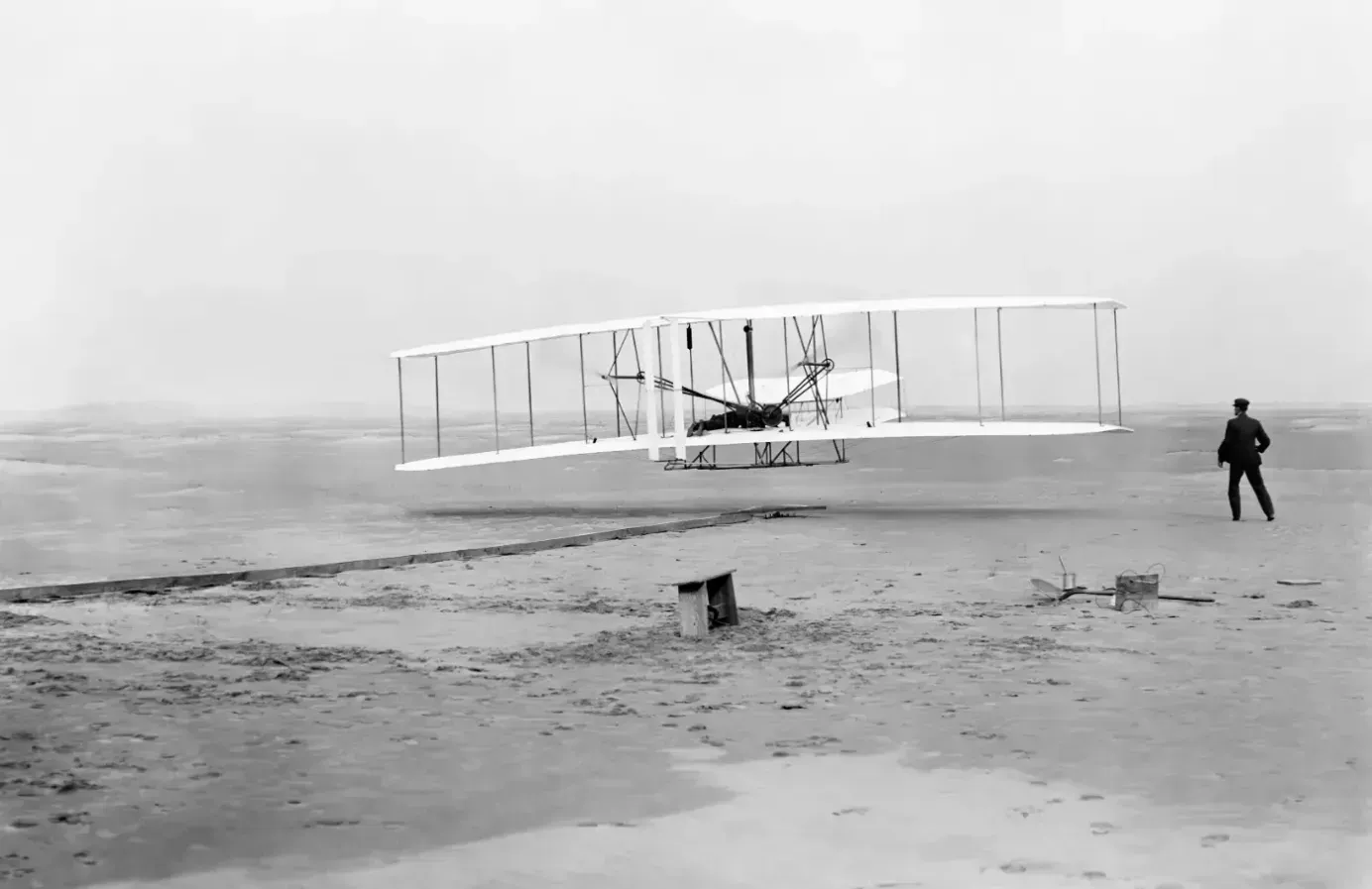
When Was the Airplane Invented?
The world's first powered and controlled heavier-than-air machine was invented by the Wright brothers. Their "Wright Flyer", was the first of its kind ever to take off.
Table of Contents
The history of technology is a vast field, and the development of our modern society rests heavily on the shoulders of the people who invented the means, products, and processes that allow our modern world to exist today. The invention of the first airplanes has an important place in our history.
In the rest of the article, we will explore the question of when the airplane was invented by looking at the Wright Brothers in more detail, as well as the inventions of Hiram Maxim, Clément Ader, and Alberto Santos-Dumont.
When Did the Wright Brothers Invent the Airplane?
The World Air Sports Federation recognizes Wilbur and Orville Wright – or, as it is internationally known, the Fédération Aéronautique Internationale – as having invented the first airplane in 1903. Most people will think of the Wright Brothers as the inventors of the airplane as well when asked, even if they cannot remember the exact year.
The whole story is a little more complicated, though.
Otto Lilienthal’s Contribution
The Wright Brothers cited German inventor Otto Lilienthal as a significant source of inspiration and information for their first airplane. Considered the Father of Aviation by many, Lilienthal was a pioneer in human flight involving gliders. This is significant because these heavier-than-air designs were, at first, succeeding the lighter-than-air hot air balloons of the 18th century.
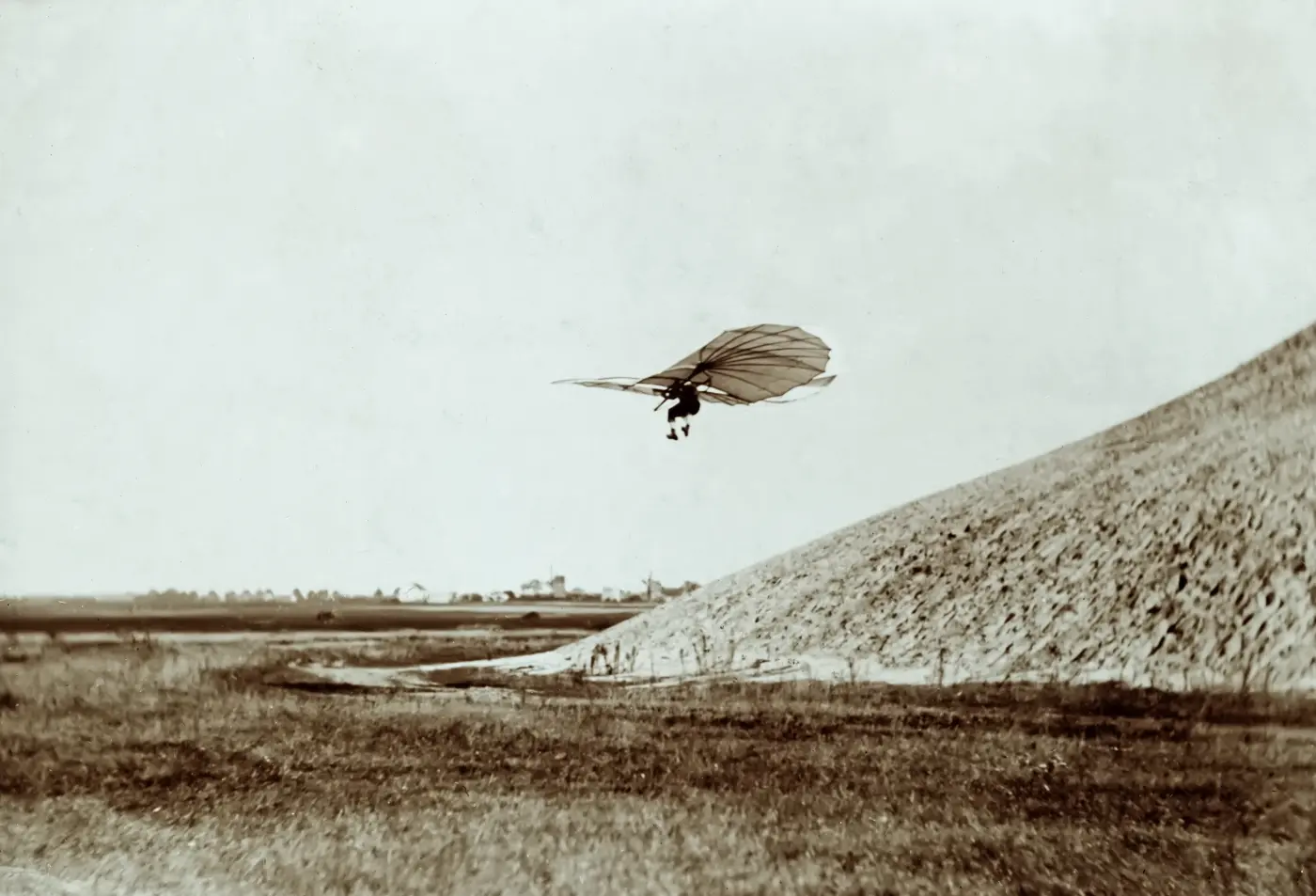
Lilienthal based his gliders on his perceptions of how birds maintain flight. This made them structurally very different from the flying machines that existed at the time, namely hot air balloons and dirigibles, but much more similar to modern airplanes, including the first ones invented by the Wright Brothers.
The Wright Flyer
Following a series of gliders invented by the Wright Brothers, the Wright Flyer was the first of their aircraft to be powered. Also known as Kitty Hawk, for the town they tested it near, this aircraft was powered by a 12-horsepower gasoline engine. Wilbur Wright piloted the Wright Flyer on its maiden voyage on December 17, 1903.
Many consider this milestone the flight of the first airplane because it meets certain criteria. Like the gliders it was inspired by, the Wright Flyer was heavier than air. Unlike the gliders, it was powered by a gasoline engine. It was also manned and controlled by a pilot during the flight.
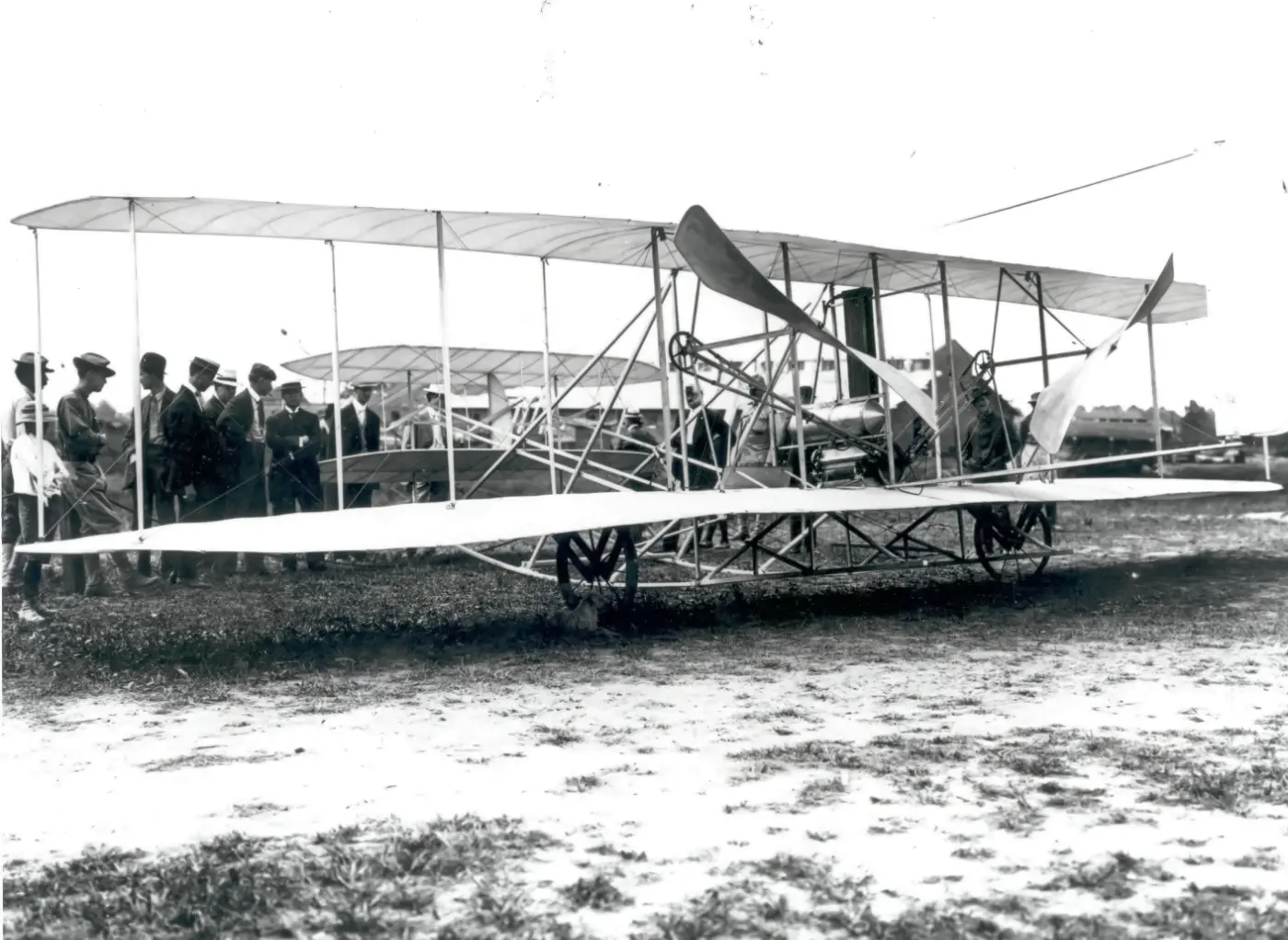
Further Wright Brothers Inventions
The Wright Flyer was succeeded by the Wright Flyer II, which had multiple changes to make it more suitable for flying. One of these changes was a more powerful engine. This machine flew a total of 105 times, the first voyage of which was on September 20, 1904, less than a year after the first Wright Flyer.
The third powered aircraft from the Wright Brothers, the Wright Flyer III, was the most successful, flying for the first time on June 23, 1905. This airplane achieved an unprecedented flight time of 39 minutes and 23 seconds, making the first case of sustained, powered, heavier-than-air flight.
The Wright Brothers did not develop any new airplanes in the years after this, but Orville Wright did go back to refining the Wright Glider in 1911. On October 24, 1911, Orville Wright broke the world record for the longest continuous flight in a glider at 9 minutes 45 seconds.
When Did Hiram Maxim Invent the Airplane?
Another candidate for answering the question of when the airplane was invented is Hiram Maxim, who built a steam-powered flying machine and successfully tested it in 1894. This machine weighed a monstrous 3.5 tons, was 110 feet (33.5 meters) wide, and was driven by a pair of 360 horsepower engines.
Hiram Maxim’s flying machine did manage to take flight. However, Maxim intentionally prevented it from going too far by a canopy of rails as the inventor did not trust its safety.
The intentional impediments to the machine’s rise were not its only limitations. Maxim realized that the machine was too heavy, especially its engines, and that this ratio of weight to power would never allow it to be a practical aircraft. For this reason, Hiram Maxim abandoned further development of his flying machine, though some consider it the first-ever airplane.
When Did Clément Ader Invent the Airplane?
French inventor Clément Ader is another candidate for the inventor of the airplane, having completed his first successful flight on October 8, 1890. Ader’s flying machine was called the Éole, and its first flight preceded Hiram Maxim’s flying machine by four years and the Wright Brothers’ Flyer by a whole thirteen years.
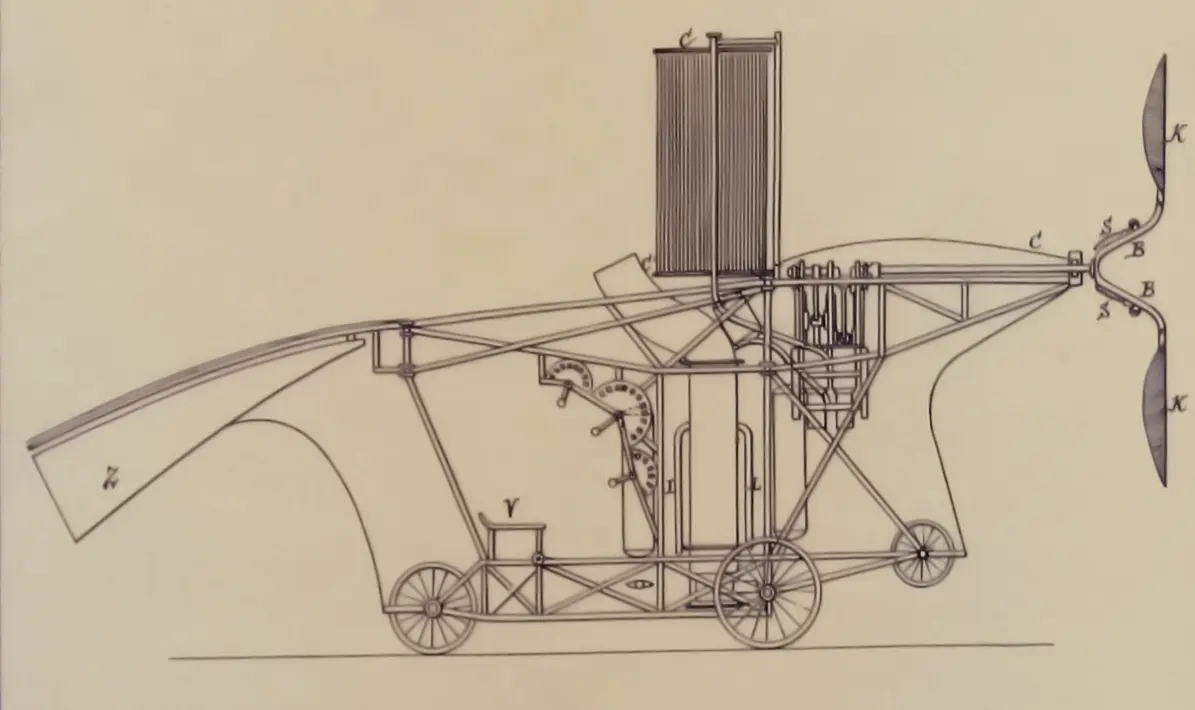
The Éole was both manned and powered, but it is rarely considered the first airplane for two significant reasons. The first of these is that the pilot’s controls were very limited, thus restricting its practicality and raising the question of whether there was any purpose for it to be manned or just a novelty.
The second reason the Éole is rarely given credit for being the first airplane is that, like Hiram Maxim’s flying machine, it was powered by steam engines which had a very poor ratio of weight to power. In the case of Ader’s aircraft, it only managed to achieve an elevation of 8 inches during its 164-foot flight.
When Did Alberto Santos-Dumont Invent the Airplane?
It is a commonly held belief that Brazilian inventor Alberto Santos-Dumont invented and tested the first airplane on October 23, 1906. However, while his flight was both successful and very impressive, it is a matter of contention whether this later flight deserves the credit of the first airplane over the Wright Brothers’ Flyer in 1903.
Alberto Santos-Dumont’s airplane, the 14-Bis, was powered by a 50-horsepower gasoline engine and flew around Paris for almost one-seventh of a mile at around 20 feet of height. Santos-Dumont did this in the presence of representatives from the Aeroclub of France, which some believe gives it primacy over the Wright Flyer, which was flown absent of large audiences and regulating bodies.
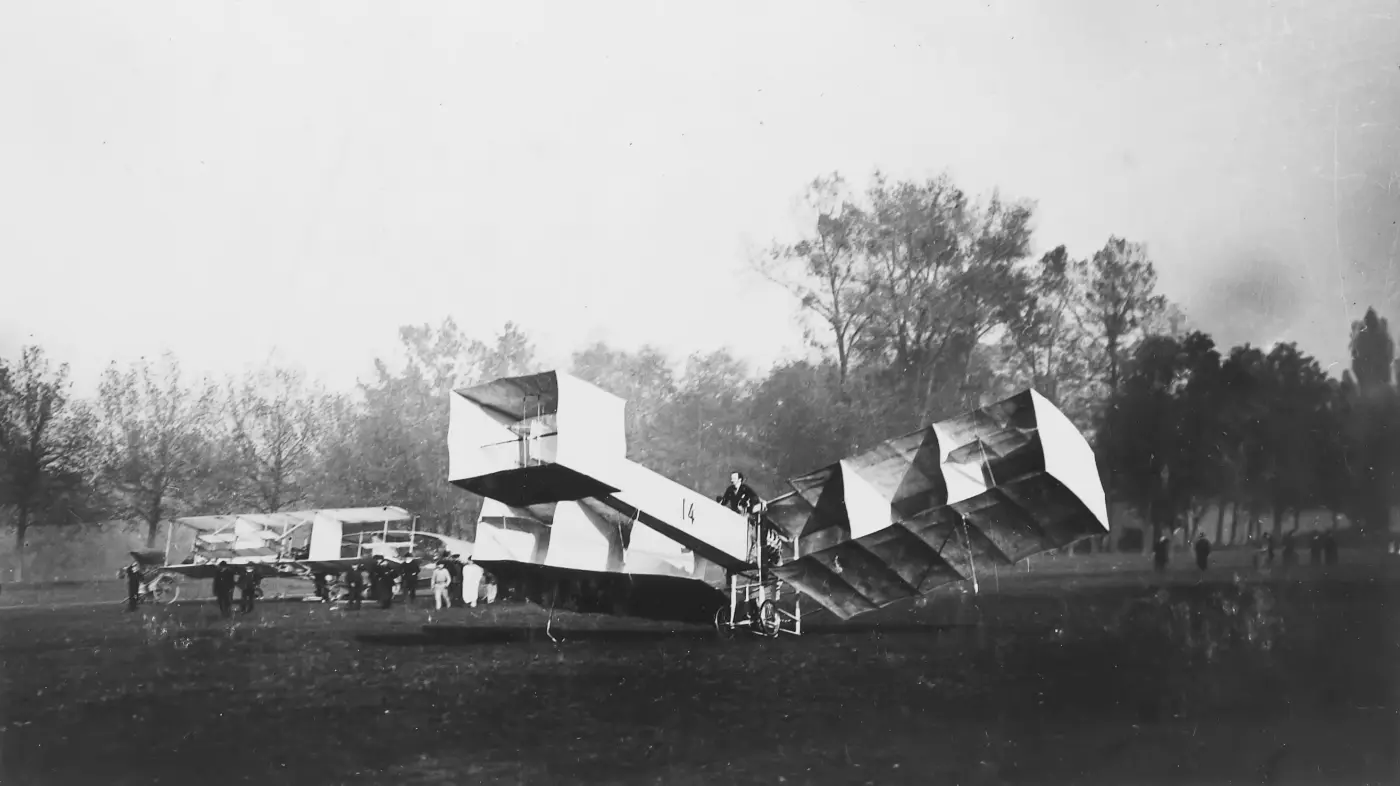
Although it is a minority view that Alberto Santos Dumont was the inventor of the first airplane, he was a brilliant aeronaut in his own right. Santos Dumont was the inventor of the first powered dirigible, circling the Eiffel Tower on July 13, 1901. However, as this was a lighter-than-air craft, it does not count as an airplane.
Conclusion
We’ve learned that there is no definite answer to when the airplane was invented due to semantics and different criteria. But we know that the Wright Brothers hold the most consideration with their flight in 1903, and we’ve explored some of the other candidates.
Interested in aviation history? Learn more about when the jet engine was invented.
Planenerd Newsletter
Join the newsletter to receive the latest updates in your inbox.






